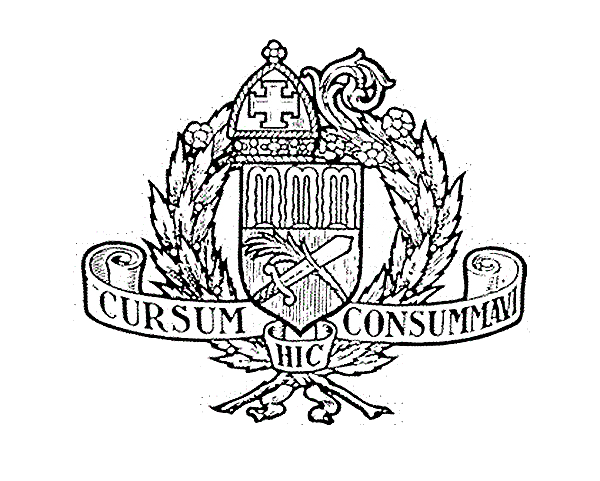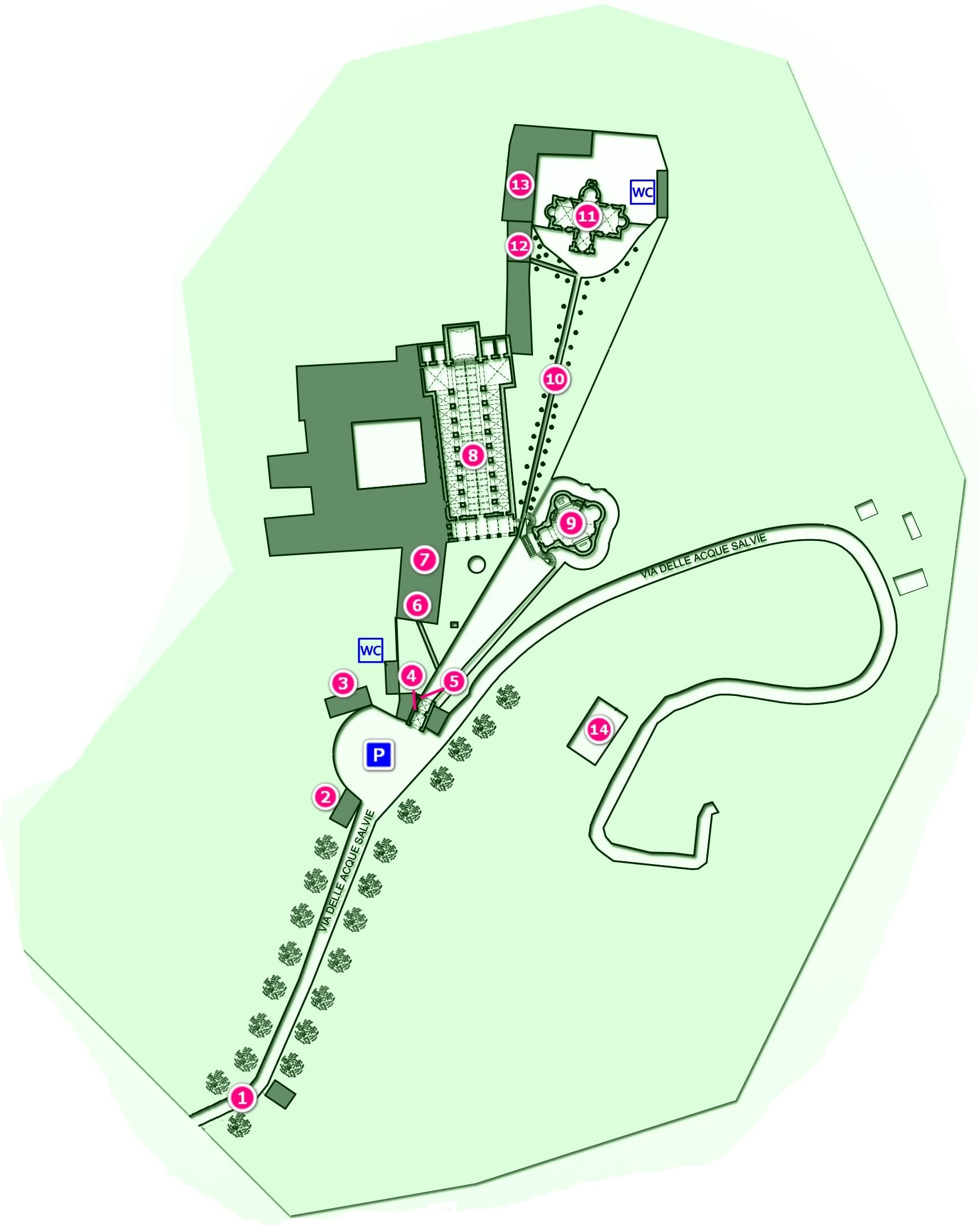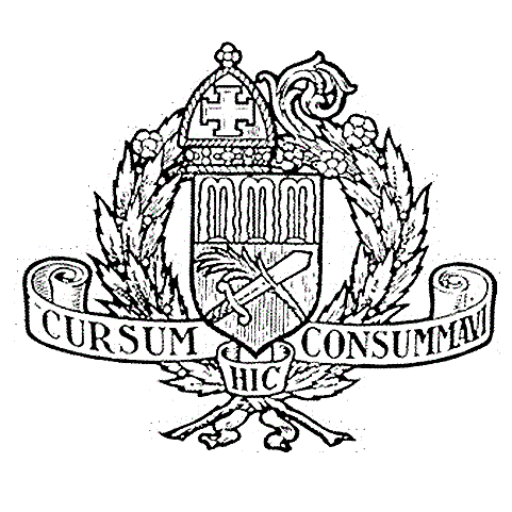The area where the complex of the Three Fountains Abbey stands today, used to be called Acque Salvie which means ‘Saving Waters’, a small valley located on the route of the ancient Via Laurentina. It is one of the most important places in Christianity since according to ancient tradition, the apostle Paul was beheaded here on 29 June 67 AD. Since at least the seventh century A.D. men of faith were drawn to live here to pray and give witness to the love of God in Jesus Christ for which St. Paul lived and died.
Visit of the Complex 🇬🇧
1 – The entrance to Via Acque Salvie immediately gives a sense of silence and peace. A shrine with the imposing figure of St. Benedict, the Father of Western Monasticism, welcomes the visitor. At the base of the statue an inscription in Latin informs us that this is a place of prayer: “Listen, son: obedience without delay. Prayer and work. Here those who want to see the heavens open, hurry along and are not distracted from their holy purpose by the harshness of the path. Things of high value are achieved with great effort. A holy life always passes by a narrow path.”
4 – Arch of Charlemagne We enter into the abbey complex through the Arch of Charlemagne, built in the 13th century, which is so called because the internal walls between the first and the second arches were originally covered with frescos which depictured the story of how the abbey helped Charlemagne. The monastery loaned the relics of Saint Anastasius to Pope Leo III, who in turn gave them to Charlemagne who attributed one of his conquests to the miraculous intervention of the saint. As a reward, Charlemagne donated some land to the monastery.
8 – Church of Saints Vincent and Anastasius The abbey church was built on the remains of an earlier Greek-Armenian monastery founded in the seventh century by monks from Cilicia, the land of Saint Paul’s birth. The emperor Heraclius entrusted these Greek monks with the custody of the relics of Saint Anastasius, a Persian monk martyred in 624. In 1370 the church was enriched with the relics of St. Vincent of Zaragoza. The Cistercian abbey as it appears to us today was built over several decades, starting in 1140, and the church was dedicated in 1221 by Pope Honorius III. The interior is very plain following the criteria of Cistercian architecture which calls for simplicity with no lavish buildings, sculptures or paintings. The frescos of the twelve apostles on the pillars of the central nave were added much later in the sixteeenth century, the work of an anonymous artist in the style of Raphael. The relics of St. Vincent, St. Anastasius and San Zeno are preserved in the chapel of the left transept.
9 – Church of Santa Maria Scala Coeli is the smallest of the three churches located in the abbey complex. The original structure was built in memory of San Zeno and 10,203 Christian legionaries who were martyred here. In 1138, precisely in this place, Saint Bernard of Clairvaux was the celebrating a mass for the dead in the presence of Pope Innocent II, when he had a vision of a staircase on which the angels were leading souls from Purgatory to Heaven, in a continuous coming and going. Hence the name “Scala Cœli” (Stairway to Heaven). The actual church was built on top of the former one to celebrate the jubilee year of 1600. The church has an octagonal plan. Inside there are three apses with their respective altars. The one on the right is dedicated to San Zeno and the martyred Roman soldiers. The central apse, directly in front of the church entrance, is dedicated to the Virgin Mary. The left apse contains the altar dedicated to St. Bernard, depicting the scene of his vision. The stairs on the right descend to the crypt, which houses a sixteenth-century altar dedicated to San Zeno and his companions. The small window on the right allows a glimpse of a corner where, according to tradition, St. Paul was held prisoner before his execution.
11 – Church of the martyrdom of St. Paul Walking along a short tree-lined avenue, which in the last stretch reveals the stones of the original Roman street, we follow in the steps of St. Paul on his way to his martyrdom. This is the holiest place in the complex, the destination of the countless pilgrims who have come for two thousand years to pray at the place where the Apostle gave his life for Christ. The present church, built in 1599 by Giacomo della Porta, stands on the place where, according to tradition, St. Paul was beheaded. The legend says that when his head was cut off, it hit the ground and then rolled to two other spots due to the sloping terrain, miraculously causing water to spring up in three places. Hence the name the ‘Three Fountains’. Above the entrance of the church, there is a marble plaque in Latin that reads: “place of the martyrdom of St. Paul the Apostle where three springs miraculously gushed forth “. Above the tympanum of the facade there are two statues dedicated to Saints Peter and Paul. Inside in the vestibule, a mosaic from the early Middle Ages is preserved. The visit starts on the right at the altar of St. Paul in the place believed to be where he was beheaded. Above the altar there is a painting of the ‘Decollation of St. Paul” done by Bartolomeo Passerotti in 1604. A marble column to the left, protected by iron metalwork, marks the sacred spot. The three fountains are aligned at equal distance from each other but at different levels, each one in a marble niche, each with a bronze image of St. Paul’s head. Above the fountains are tabernacles designed by della Porta, flanked by columns of black marble. The water of the fountains was closed off in 1950. The church was restored in 1867 and Pope Pius IX donated a Roman mosaic dedicated to the Four Seasons that dates back to the 2nd century, which was installed on the floor of the central nave. It bears the inscriptions: VER (spring) – AESTAS (summer) – AUTU (MNUS) (autumn) – HIEMS (winter). On the left, above the altar dedicated to St. Peter, there is a copy of the “Crucifixion of St. Peter” by Guido Reni, completed in 1605, imitating the style of Caravaggio. The original is now kept in the Vatican.
This sacred place of pilgrimage, where the blood of thousands of martyrs was shed and the prayer of centuries of monks interceded for all Christians, invites us to question ourselves about the purpose and aim of our own lives. Other generations have given their lives to transmit the Christian faith to us, faith in Jesus Christ as the Son of God who saved us from sin and death, to give us his own divine life in the Spirit. It is the time and place to ask these saints to open our eyes and our hearts to God’s grace and to entrust our lives and our families, even the entire world with all of its problems to His merciful love. (For further information see the Guidebook by Nicoletta Bernacchio which is available at the monastic shop or at the shop of Jehoshu’a).



